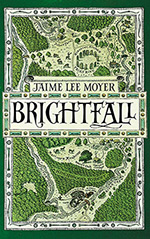
![]() Naomi_uk72
Naomi_uk72
7/26/2019
![]()
DISCLAIMER: I was provided with an advanced reading copy of this book by the publisher (via Amazon Vine) in return for an honest review.
I'm not going to lie, I really wasn't impressed with this book. It's got so many faults and flaws that the few shining moments it does have don't really raise it above a two-star rating, in my opinion. And honestly, this is a hell of a shame, because the basic premise has so much promise and so much to offer.
Robin Hood and his Merry Men have broken up and gone their separate ways. Robin himself has retreated to a monastery to seek forgiveness for his sins, Tuck has become Abbott of St Mary's Abbey in Nottingham, Little John's got married and started a farm, and Marian has settled down to a simple life as the local witch of Sherwood with her two children and a seriously smart vixen. One day, Marian is visited by Timothy, one of Tuck's junior monks, who brings bad news - apparently someone seems to be going around killing her old friends in mysterious ways, with Will (presumably Scarlet) being the most recent.
After pressing the monk for as much information as he can provide, Marian agrees to meet up with Tuck three days later at a tavern in Nottingham, giving her time to wander off to the local stone circle where she summons up a fae Lady and her retinue to find out if they can shed some light on what's going on. There's a run-in with an obnoxious brat of a fae girl and the fae Lady gives Marian a promise of protection, and then suddenly Marian's off to see the local guardian of Sherwood, who just happens to be a dragon.
See, this is one of the many problems I have with this book. The fae are initially introduced as these powerful, dangerous spirits who shouldn't be treated lightly, and yet at several points throughout the narrative Marian barely raises a sweat dealing with them. She even ends up with a fae Lord accompanying her on her journey. The dragon (whose name is Marlow) shows up briefly in the beginning, with Marian tending to an injured wing, and then turns up again at the end of the story but doesn't seem to serve any purpose other than to tick a trope box. The same goes for the brief appearance of the wholly unthreatening griffin, the slightly out-of-place mermaids who've made their home in the River Sheaf, and old mother Grindylow and her children that the heroes encounter on the outskirts of Sheffield market. None of these encounters seem to offer more than a cursory challenge to the protagonists and then they're gone.
Another problem I have is the historical and geographical accuracy. Now, it may just be because I grew up in this area and spent a fair bit of my life studying the local history and geography, but the author gets so many things wrong in this book. I'm not saying there wasn't a stone circle in Sherwood back at the start of the Thirteenth Century, but if there was it's not one I've heard of. The nearest one I can think of is Nine Ladies, which is about thirty miles from Nottingham on Stanton Moor. Then there's Tuck's Abbey, St Mary's in Nottingham. Unfortunately, according to folklore the St Mary's Abbey connected with Tuck was all the way up in York, and while there is a St. Mary's in Nottingham it's never been an Abbey.
The author also seems to have a problem with geography. It takes Marian and her entourage a few days to get from Hucknall (where Little John lives) to Mansfield. That's a massive hike of all of nine miles for those who don't want to break out Google maps, and even allowing for the fact the land was covered in greenwood at the time that still wouldn't take most people more than half a day to walk. There are other confusing geographical problems, such as the cliffs and waterfalls they pass as they follow the River Sheaf, but for me the worst part is the very inclusion of Sheffield in the first place.
Look, back in the thirteenth century Sheffield was pretty much nothing more than a wooden castle sitting on the confluence of the Don and Sheaf, with a small hamlet of huts and taverns clustered nearby for the protection the castle afforded. But in this book Sheffield is described as a bustling metropolis with busy streets and a thriving market economy, and absolutely no mention whatsoever of the castle. Now, call me a pedant, but this was the last straw in a book full of particularly troubling straws. My disbelief has been far from suspended by this book.
I'm not saying it's all bad. There are some nice touches in the background detail and it's clear the author has tried very hard to make this at least somewhat historically accurate, but for me it could have done with much deeper research and much better exploration of the local geography. The character of Marian is well written and presents us with a strong female heroine that's far more than just the usual kick-ass woman with a sword, and the interplay between her, Jack and Bert is engaging. This is why I'm giving this two stars, and not the one star I was leaning towards when I initially turned the last page in the book. I can kind of see why so many other readers have fallen in love with this book, but for me the lack of accuracy was enough to make me less than interested in further adventures of Maid Marian at this time.